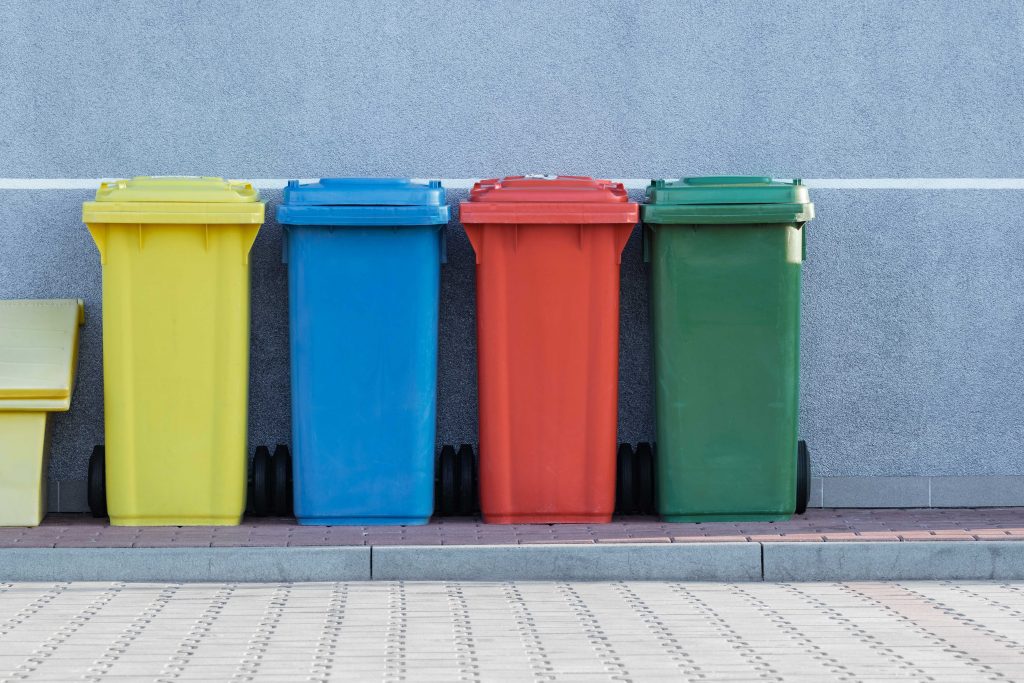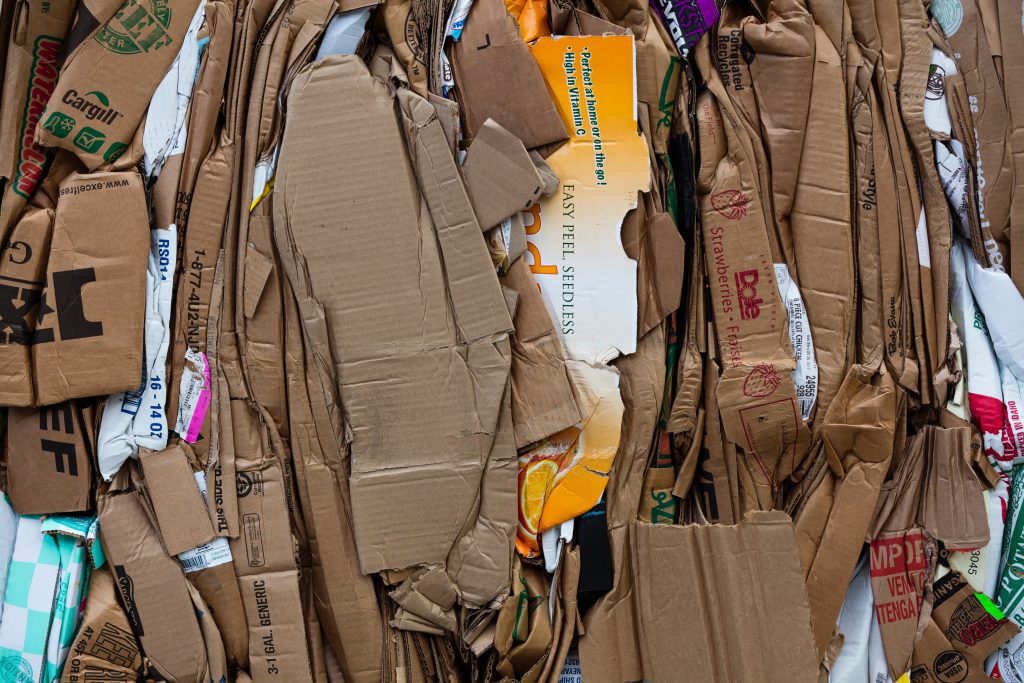Does anyone else remember being taught in elementary school that plastic is more environmentally friendly than paper?
More specifically, the idea was that plastic is infinitely renewed through recycling, and, opposingly, that trees are a nonrenewable resource. While this might sound like a valid concept, it’s far from the truth. Instead, many qualities of paper make it surprisingly sustainable. To dispel the myth that plastic is superior, we’re going to look at three sustainability reasons why paper is better than plastic.
1. Paper is the most recyclable product
Across the globe, recycling rates of paper consistently outrank those of plastic. Presently, in the U.S. 65% of paper is recycled compared to only 9% of plastic, while in Europe where recycling rates are higher, 74% of paper is recycled compared to 42% of plastic. 1, 2 Surprisingly, paper is also the most recycled substance in the United States. By weight, more paper is recycled than metals and plastics combined. 3
In part, this is because paper is easier to recycle and some types of plastic cannot be recycled at all.4 In addition, whether certain types of plastic are recycled depends on if recycling centers have specific machinery. As well, this process is time consuming and cost ineffective. Just because the recycle symbol is on something does not mean it definitively will be recycled. 5 Furthermore, with seven different types, plastic is difficult to sort efficiently at recycling centers.6,7 Conversely, paper is simple to sort and recycle.,7 Unfortunately, one study suggests that due to the complexity of recycling plastic, the U.S. has decreased it’s rate of plastic recycling. 8,9 On the contrary, the paper recycling rate has consistently increased. 10
Next, paper is better than plastic for turning into a recycled product. On one hand, the processes used to turn paper into a recycled product are simple and environmentally friendly. On the other hand, plastic recycling is a volatile process that produces a lower quality plastic than the original product. What’s more, unstable plastic resin is known to break the machinery used to recycle it. Then, ink and other contamination require that the recycled product must be mixed with new plastics to create a usable final product. Indeed, this ongoing and persistent need for new plastic lessens the impact of recycling the plastics. Generally, after two to three rounds of being recycled, plastic can no longer be remade into a reusable material. Contrarily, recycling paper does not rely on chemical reactions. It is easy to repulp and turn into a 100% recycled paper product. 11

Photo Credit: Pawel Czerwinski
2. Paper is biodegradable
Unlike paper, literal tons of plastic are not recycled each year. 11 Distinctively, plastics litter the landscape, end up in waterways, harm wildlife and saturate landfills. 12,13 Additionally, plastic burned along with other waste releases toxins into the air. 13 If paper isn’t recycled, ends up in a landfill or is littered, it biodegrades relatively quickly. However, when plastic breaks down, chemicals are released into the environment that can contaminate groundwater and drinking water supply. 14 As a result, these chemicals, such as BPA and PFAS (or polyfluoroalkyl substances) may create adverse health outcomes such as “cancer, birth defects, liver disease, thyroid disease, plummeting sperm counts, kidney disease, decreased immunity and a range of other serious health problems.”15
Obviously, recycling all plastics is preferable. Unfortunately, waste and litter are a reality, but the environmental impact of paper if disposed of or even littered is much less than that of plastic. Luckily, new methods are constantly arising to confront recycling inefficiencies. 16

Photo Credit: John Moore
3. Paper supports sustainable forestry
Perhaps most importantly, paper is better than plastic because it promotes sustainable forestry. Sustainable forests balance harvesting with planting and ensure that forested habitat is not lost. Through sustainable forestry, trees are replanted, making them renewable. Certainly, deforestation is still an issue but primarily occurs when land is cleared for agriculture. Paper products largely come from sustainable, intentionally-managed forests. 17
Sustainable forests have recreational, aesthetic, and climate benefits. For one, forested lands are sometimes used for biking and hiking. Even if they are not, they provide visual value to communities. Likewise, sustainable forests benefit the environment. Meanwhile, as homes for wildlife and pollinators, they promote biodiversity. Furthermore, trees manage watershed as well as prevent erosion and landslides. Similarly, as trees grow they remove carbon from the environment while other products require carbon use throughout their manufacturing process. Overall, sustainable forests are carbon neutral. 18
Uniquely, the use of paper supports sustainable forests as a resource. Hence, as demand for paper products increases, so do sustainable forests. Significantly, sustainable forests in Europe have increased by an area roughly the size of Switzerland. 18, 2

Photo Credit: Geran DeKlerk
Conclusion
In addition to sustainable and recyclable products, paper and wood from sustainable forests are used to create sustainable building materials and renewable fuel.18 Again, paper’s benefits include biodegradability, recyclability and promotion of the use of sustainable forests. In contrast, plastic is notoriously difficult and inefficient to recycle. Unlike paper, discarded and littered plastics can become a near permanent part of the landscape because they may take 450 years or more to break down beyond recognition.8, 13 Further, many of these plastics are used only once before being discarded. Sometimes, single-use plastics are used only for several minutes before being thrown away. 9 Of course, when possible, plastic use should be reduced or eliminated. 11
Finally, considering the sustainability implications of each material is complicated because every material has benefits and drawbacks. After all, every material and every choice has environmental impact, but it may very well be that paper is better than plastic. So, in a world of waste and pollution, paper has many superior qualities.19 Ultimately, reducing use of any disposable or recyclable material is ideal, but, when we must, let’s consider paper for its many sustainable benefits.

Photo Credit: JJ Ying
Sources:
- Two Sides. (2022, August 5). Myth: “Paper is bad for the environment”. https://www.twosides.info/sustainable-products/
- American Forest and Paper Association. (2021, August 9). New York Times misses the point on paper recycling. https://www.afandpa.org/news/2021/new-york-times-misses-point-paper-recycling
- Why is plastic recycling so difficult? (2019, December 19). Waste360. https://www.waste360.com/recycling/why-plastic-recycling-so-difficult
- National Geographic Society. (2018, April 13). 7 things you didn’t know about plastic (and recycling). https://blog.nationalgeographic.org/2018/04/04/7-things-you-didnt-know-about-plastic-and-recycling/
- Why can’t all plastic be recycled? (2022). Forge Recycling – UK Waste Collection, Management & Recycling. https://www.forgerecycling.co.uk/blog/why-cant-all-plastic-be-recycled/
- Miller, C. (2021, October 25). Why paper is easier to recycle than plastic. Waste360. https://www.waste360.com/paper/why-paper-easier-recycle-plastic
- Bennet, P. (2022, May 4). Plastics recycling ‘Does not work,’ environmentalists stress as U.S. recycling rates drop to 5%. EcoWatch. https://www.ecowatch.com/plastics-recycling-rate-us.html
- Beyond Plastics. (2022, May 4). New report reveals that U.S. plastics recycling rate has fallen to 5%-6%. Beyond Plastics – Working To End Single-Use Plastic Pollution. https://www.beyondplastics.org/press-releases/the-real-truth-about-plastics-recycling
- EcoEnterprise. (2022). Paper versus plastic | Is paper more eco-friendly than plastic? Eco Friendly Shipping Supplies | Biodegradable, Sustainable Packaging. https://www.ecoenclose.com/paper-versus-plastic-and-bioplastic/
- Wakefield, F. (2022, June 22). Top 25 recycling facts and statistics for 2022. World Economic Forum. https://www.weforum.org/agenda/2022/06/recycling-global-statistics-facts-plastic-paper/
- Reid, M. (2018, July 2). Our plastic problem. Fleet Farming. https://fleetfarming.org/our-plastic-problem/
- Gammage, E. (2022, June 6). How long does it take for plastic to biodegrade? SaveMoneyCutCarbon. https://www.savemoneycutcarbon.com/learn-save/how-long-does-it-take-for-plastic-to-biodegrade/
- Ziegler, C. (2022, October 7). Waste burning is making us sick. IDEAS For Us. https://ideasforus.org/waste-burning-is-making-us-sick
- EPA. (2022, September 7). Addressing challenges of PFAS: Protecting groundwater and treating contaminated sources. US EPA. https://www.epa.gov/sciencematters/addressing-challenges-pfas-protecting-groundwater-and-treating-contaminated-sources
- Perkins, T. (2021, July 9). Toxic ‘forever chemicals’ are contaminating plastic food containers. the Guardian. https://www.theguardian.com/environment/2021/jul/09/toxic-forever-chemicals-plastic-food-containers
- Lott, A. (2022, February 28). New ideas for plastic recycling. IDEAS For Us. https://ideasforus.org/new-ideas-for-plastic-recycling/
- Agribusiness. (2015, June 19). Greenpeace USA. https://www.greenpeace.org/usa/forests/issues/agribusiness/
- Steer, A. D., & Bakker, P. (2016). Sustainable Procurement of Forest Products. Sustainable Forest Products. https://sustainableforestproducts.org/Sustainable_Forest_Management
- White, J. (2022, March 31). Ending plastic pollution: The 2022 UN deal. IDEAS For Us. https://ideasforus.org/un-plastic-treaty/








